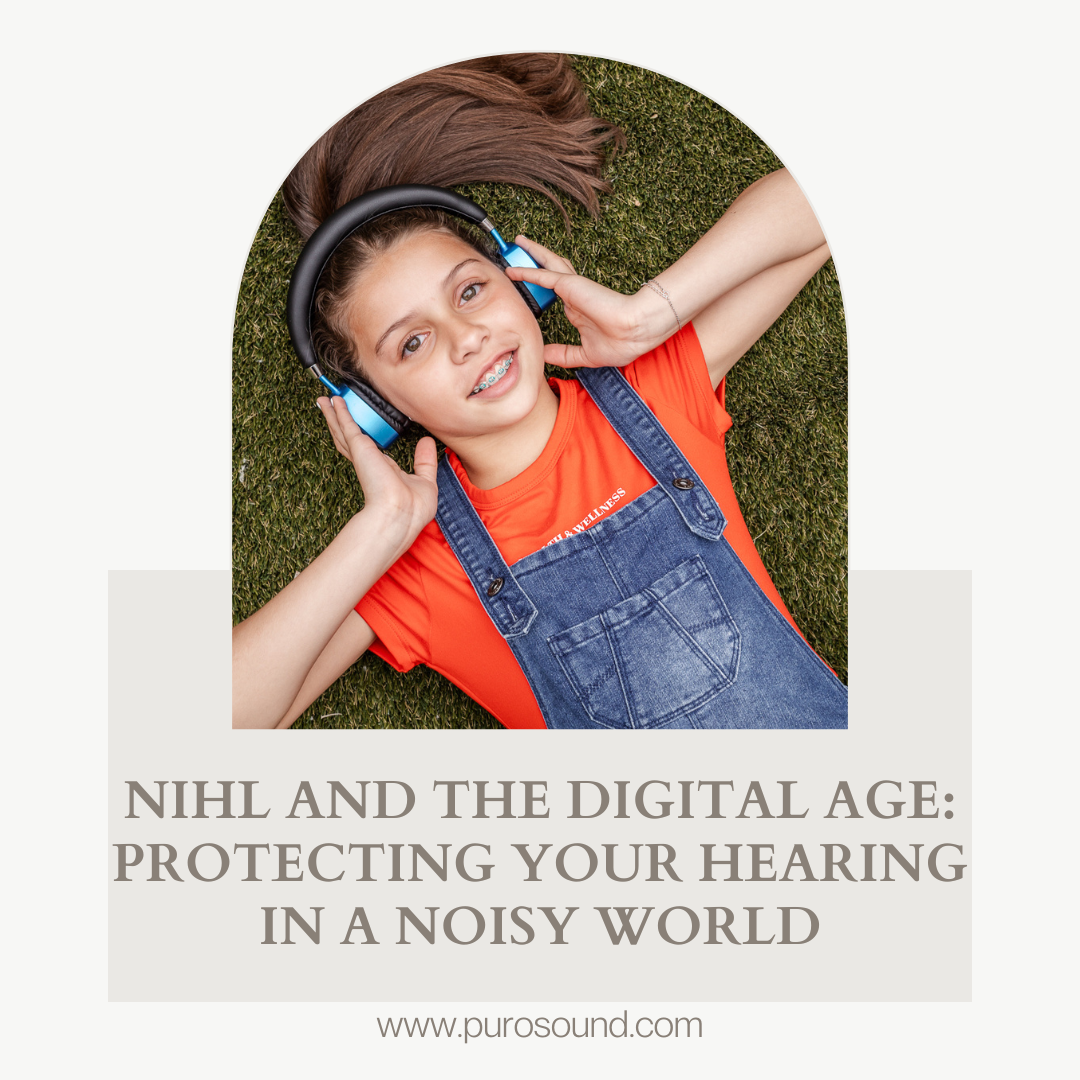NIHL and the Digital Age: Protecting Your Hearing in a Noisy World

In our increasingly connected and digital world, we're surrounded by sound more than ever before. From the constant ping of notifications to the immersive audio experiences of games and movies, our ears are continuously processing a cacophony of digital noise. While these sounds enrich our lives in many ways, they also pose a significant risk to our hearing health. Let's explore the challenge of Noise-Induced Hearing Loss (NIHL) in the digital age and discuss strategies to protect our hearing.
The Digital Noise Landscape
Our digital devices have become extensions of ourselves, providing a constant stream of audio input:
- Smartphones and tablets
- Wireless earbuds and headphones
- Smart home devices
- Gaming consoles
- Laptops and computers
While none of these devices are inherently harmful, the way we use them can put our hearing at risk.
Understanding NIHL in the Digital Context
Noise-Induced Hearing Loss occurs when we're exposed to loud sounds over time or from a single intense noise event. In the digital world, the primary concern is prolonged exposure to moderate-to-high volume levels, particularly through personal audio devices.
Key risk factors include:
- Extended listening sessions
- High volume settings
- Background noise leading to volume increases
- Lack of awareness about safe listening levels
Debunking Digital Audio Myths
Myth 1: "My device's maximum volume is safe."
Reality: Many devices can produce sound well above safe levels.
Myth 2: "Noise-cancelling headphones are harmful."
Reality: They can actually help by allowing lower volume settings in noisy environments.
Myth 3: "I'll notice if the volume is too loud."
Reality: Our ears can adapt to loud sounds, masking the danger.
Protecting Your Hearing in the Digital Age
- Follow the 60/60 Rule
Listen at no more than 60% of maximum volume for no longer than 60 minutes at a time.
- Use Volume-Limiting Headphones
Invest in headphones designed to cap volume at safe levels, like those offered by Puro Sound Labs.
- Take Listening Breaks
Give your ears regular breaks from audio input.
- Be Mindful of Environmental Noise
In noisy environments, resist the urge to simply turn up the volume. Instead, use noise-cancelling features or move to a quieter area.
- Adjust Device Settings
Many smartphones and tablets have built-in volume limit settings. Use them.
- Opt for Over-Ear Headphones
They generally allow for better sound quality at lower volumes compared to in-ear options.
- Use Smart Volume Apps
Some apps can monitor your listening habits and warn you when you're approaching dangerous levels.
- Educate Children Early
Teach kids about safe listening habits from an early age.
The Role of Technology in Hearing Protection
Ironically, the same digital age that poses risks to our hearing also offers innovative solutions:
- Smart Hearing Protection: Some modern earbuds can adapt to your environment, adjusting audio levels for safe listening.
- Hearing Health Apps: Apps can now track your listening habits and provide personalized advice.
- Advanced Noise-Cancelling: Better noise-cancelling technology allows for clearer audio at lower volumes.
- Volume-Limiting Hardware: Companies like Puro Sound Labs are creating headphones with built-in volume limiting technology.
The Future of Digital Audio and Hearing Health
As awareness of NIHL grows, we're likely to see more integration of hearing protection features in our devices. Future smartphones might come with built-in hearing tests and personalized safe listening profiles.
The digital age has transformed how we interact with sound, bringing both new risks and new opportunities for protecting our hearing. By understanding these risks and adopting smart listening habits, we can continue to enjoy the rich audio experiences that digital technology offers without compromising our long-term hearing health.
Remember, your hearing is irreplaceable. In our noisy digital world, taking proactive steps to protect it isn't just wise—it's essential. Whether it's setting volume limits, investing in hearing-safe audio gear, or simply taking regular listening breaks, every action you take to protect your hearing is an investment in your future quality of life.
Let's embrace the sounds of the digital age responsibly, ensuring that we can continue to enjoy them for years to come. Your ears will thank you!

